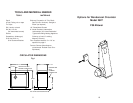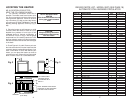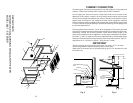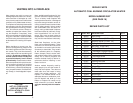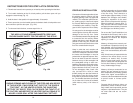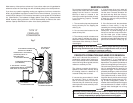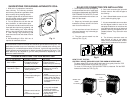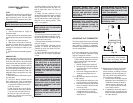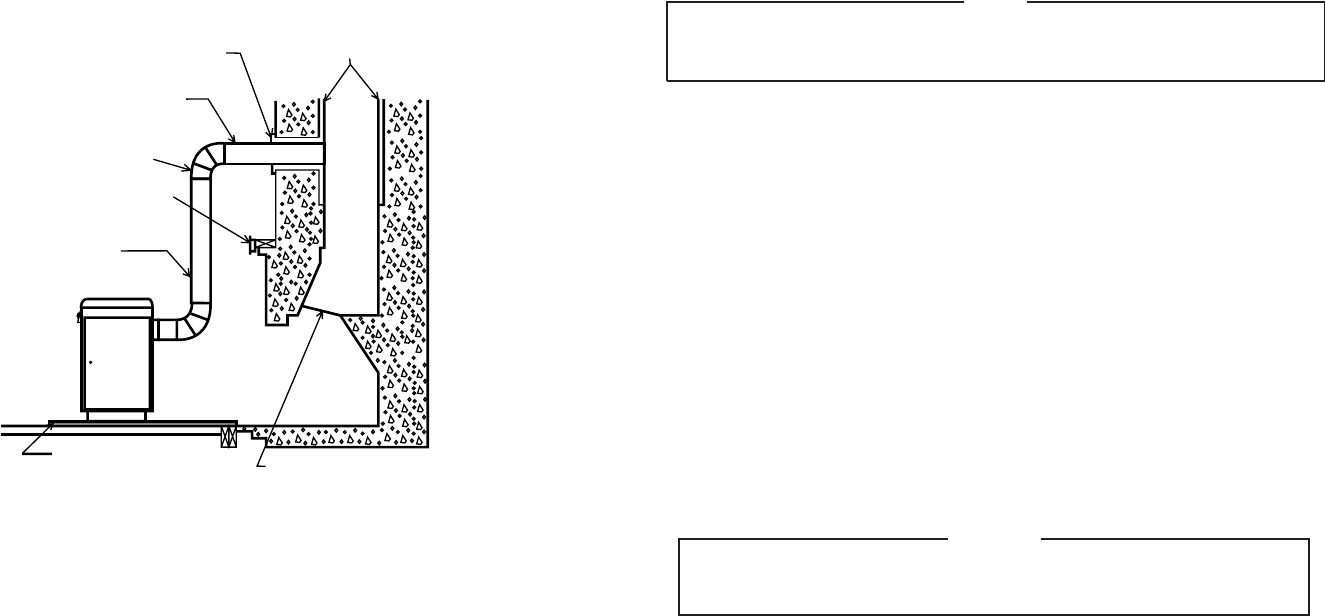
SERVICE HINTS
Do not expect a heater to draw. It is the
chimney that creates the draft. Smoke
spillage into the house or excessive
build-up of water or creosote in the
chimney are warnings that the chimney
is not functioning properly. Possible
causes are:
1. The connection pipe may be pushed
into the chimney too far, stopping the
draft (Fig. 8).
2. Do not connect two heaters into the
same chimney flue.
3. The chimney used for a heater must
not be used to ventilate the cellar or
basement. If there is a cleanout opening
at the base of the chimney, it must be
closed tightly.
4. If the chimney is too cool, water will
condense in the chimney and run back
into the stove. Creosote formation will
be rapid and may block the chimney.
Operate the heater at a high enough fire
to keep the chimney warm preventing
this condensation.
5. If the fire burns well, but sometimes
smokes or burns slowly, it may be
caused by the chimney top being lower
than another part of the house or a
nearby tree. The wind blowing over a
house or a tree falls on top of the chim-
ney like water over a dam, beating
down the smoke. The top of the chimney
should be at least 3 feet higher than any
point of the roof within 10 feet (Fig. 6).
When coal is burned, the products of
combustion combine with moisture to
form a soot residue which accumulates
on the flue lining. When ignited, this soot
makes an extremely hot fire.
The chimney connector should be in-
spected at least twice monthly during
the heating season to determine if a
creosote buildup has occurred.
If creosote has accumulated, it should
be removed. Failure to remove creo-
sote or soot may cause a house fire.
Creosote may be removed by using a
chimney brush or other commonly avail-
able materials.
Chimney fires burn very hot -- up to
2100 degrees F. If you experience a
chimney fire, immediately call the fire
department. They have the professional
means for extinguishing a chimney fire.
Once a chimney fire has occurred, it can
only be extinguished by removing its
sources of oxygen. This can be accom-
plished by shutting any mechanical draft
device such as dampers, discharging a
CO2 (carbon dioxide) or halon fire ex-
tinguisher directly into the stove through
an appropriately placed cleanout. If us-
ing a Halon extinguisher, please re-
member that is totally displaces oxygen
and could become a hazard in itself if
enough were discharged into a living
space.
CAUTION
A chimney fire may cause ignition of wall studs or rafters which you thought
were safe distance from the chimney. If you have a chimney fire, have your
chimney inspected by a qualified person before using again.
NOTE:
A draft reading of .05 to .06 w.c. is suggested for proper burning of this unit
when using bituminous coal as fuel. When using anthracite coal, this draft
readings is a minimum reading.
CHIMNEY MAINTENANCE
CREOSOTE-FORMATION AND NEED FOR REMOVAL
138
Most masonry chimneys have a cleanout. If yours does, make sure it is gasketed or
otherwise sealed. A loose fitting door will contribute greatly to the draft problems.
If you have any question regarding venting your appliance, feel free to contact the
factory at the address and phone number on this Owner's Manual. You may also
contact NFPA (National Fire Protection Association) and request NFPA Standard
211 (1984 Edition). Their address is Battery March Park, Quincy, Massachusetts
02269. Another helpful publication is NFPA Standard 908, available at the same
address. Specify 1984 Edition on either of the above publications.
TYPE "A"
FIREPLACE
CONVERSION
Fig. 7
5/8" FIRECLAY
FLUE LINER
STOVEPIPE CONNECTOR
SEALED AT THIMBLE
HORIZONTAL 6" STOVEPIPE
(24 GAUGE) WITH 1/4"
RISE PER FOOT
6" STOVEPIPE ELBOW
CLEARANCE REDUCER
(FOR MANTEL)
6" STOVEPIPE - HAVING
THREE SHEET METAL SCREWS
PER JOINT OF STOVEPIPE
U.L. LISTED
FLOOR PROTECTOR
DAMPER THROAT
CLOSED AND SEALED




